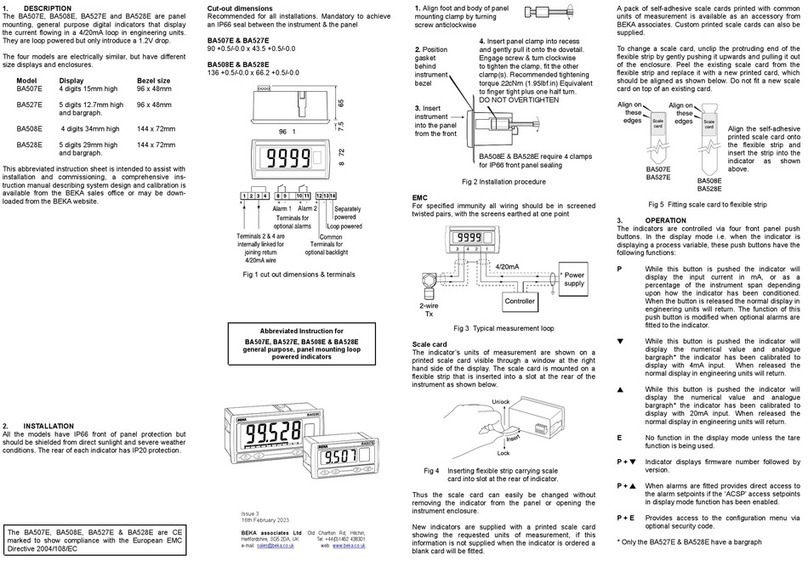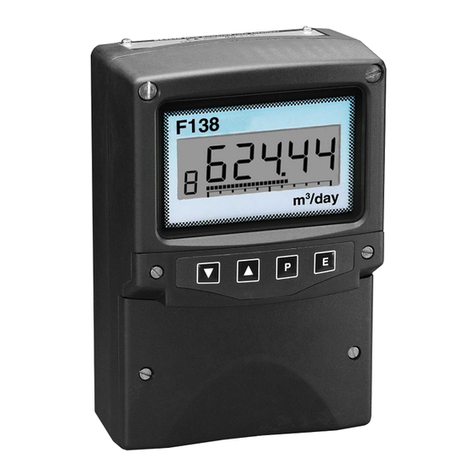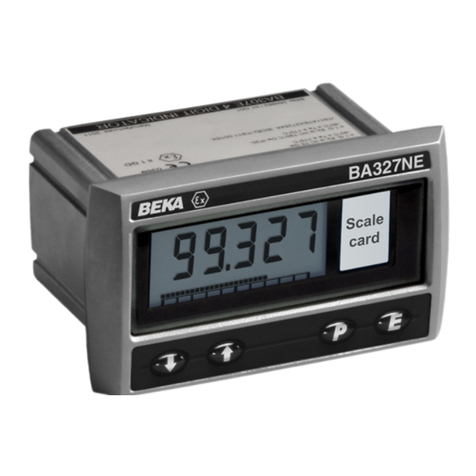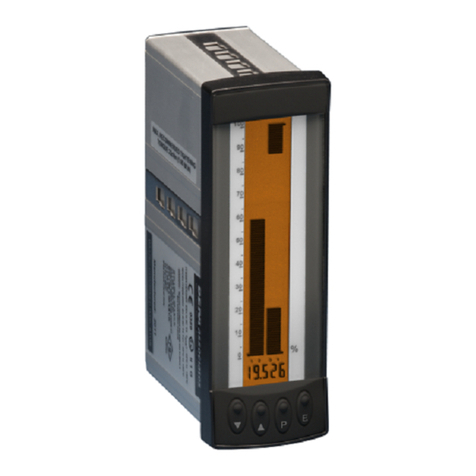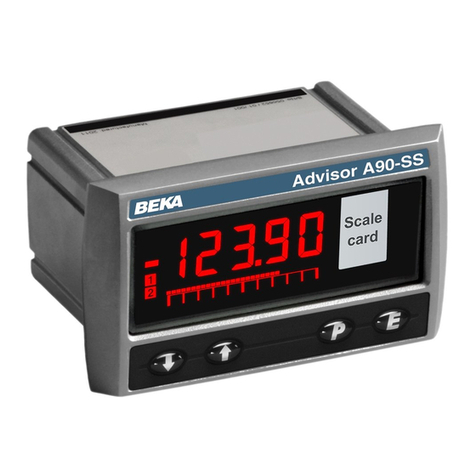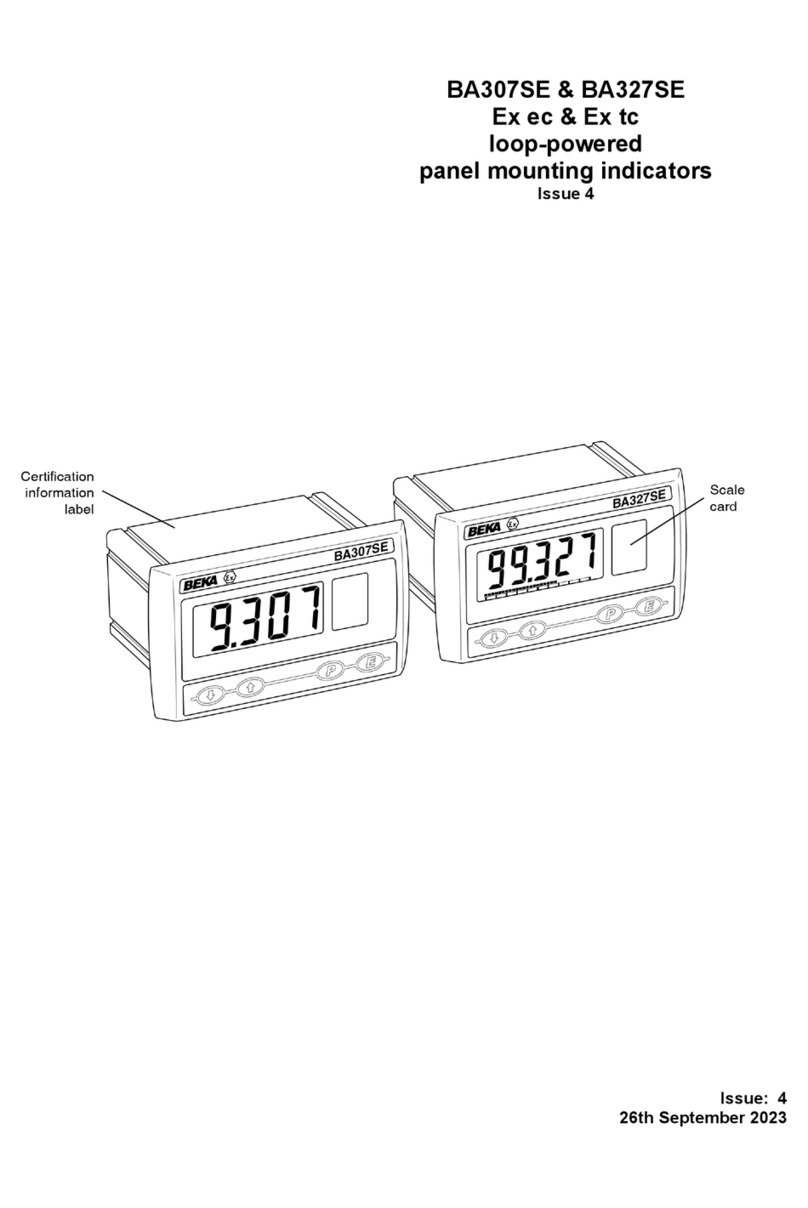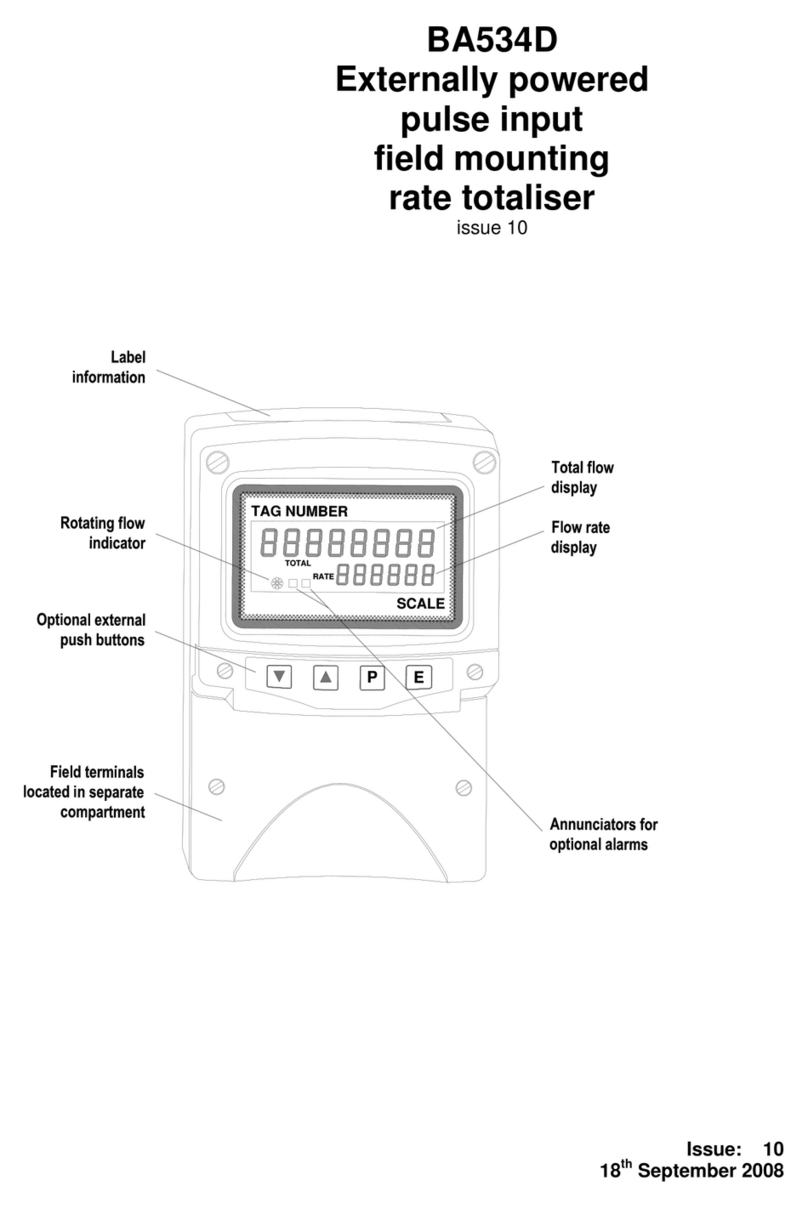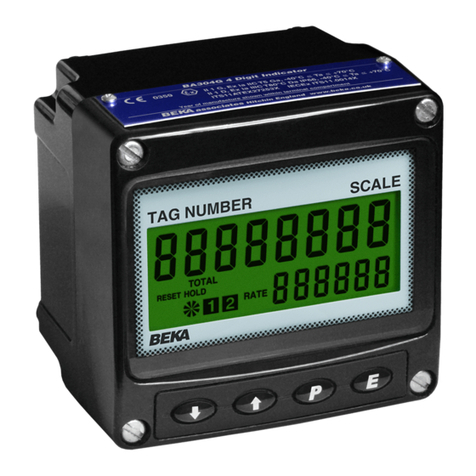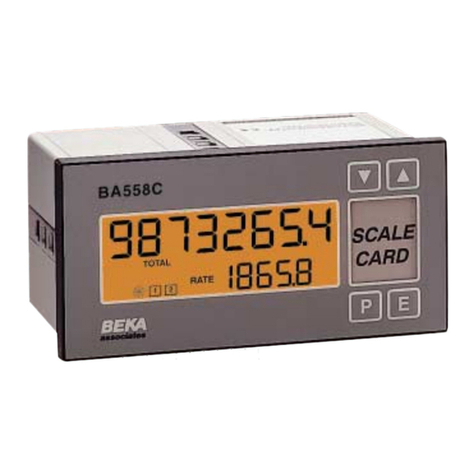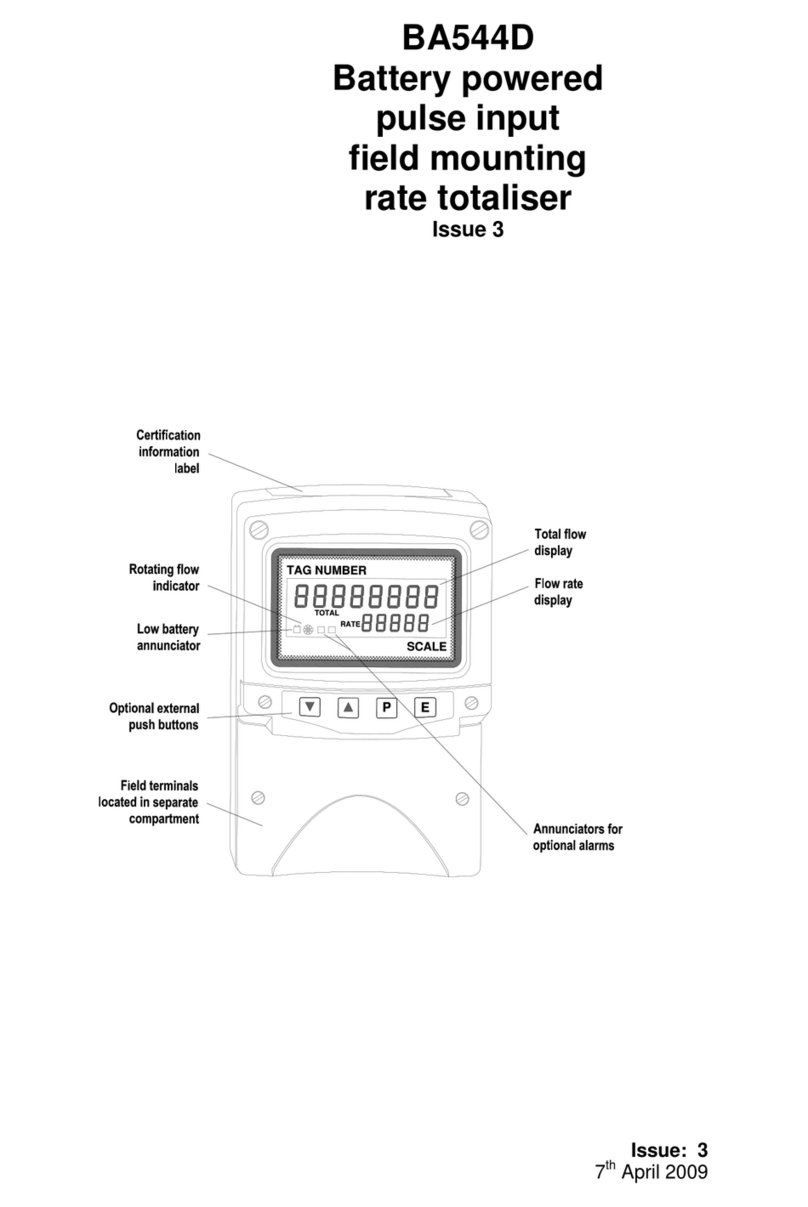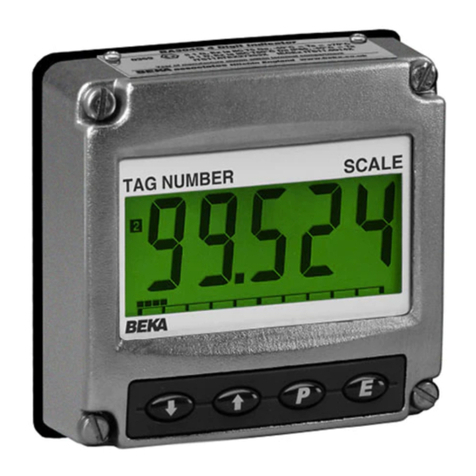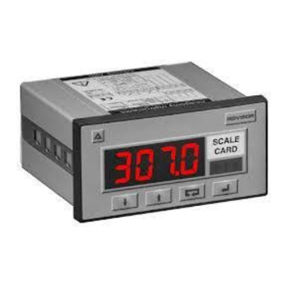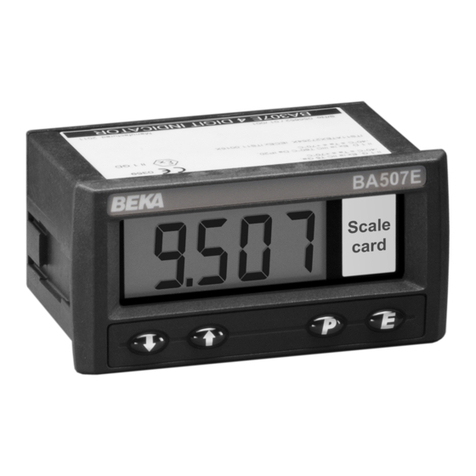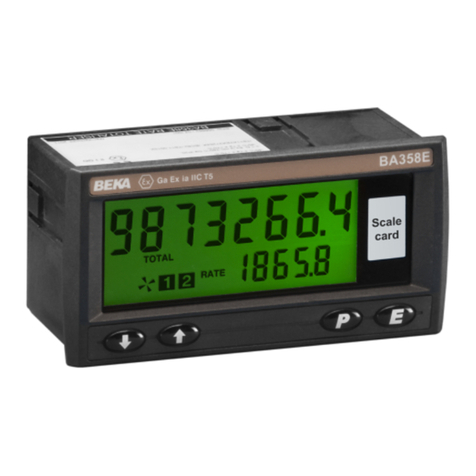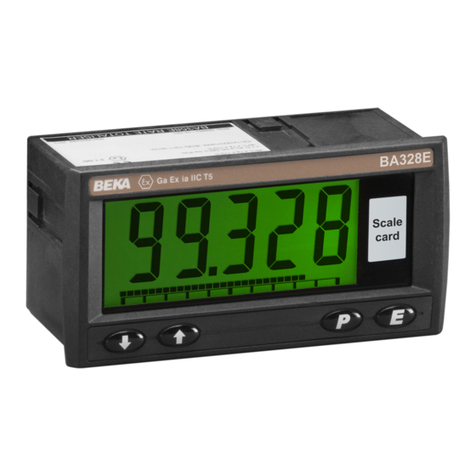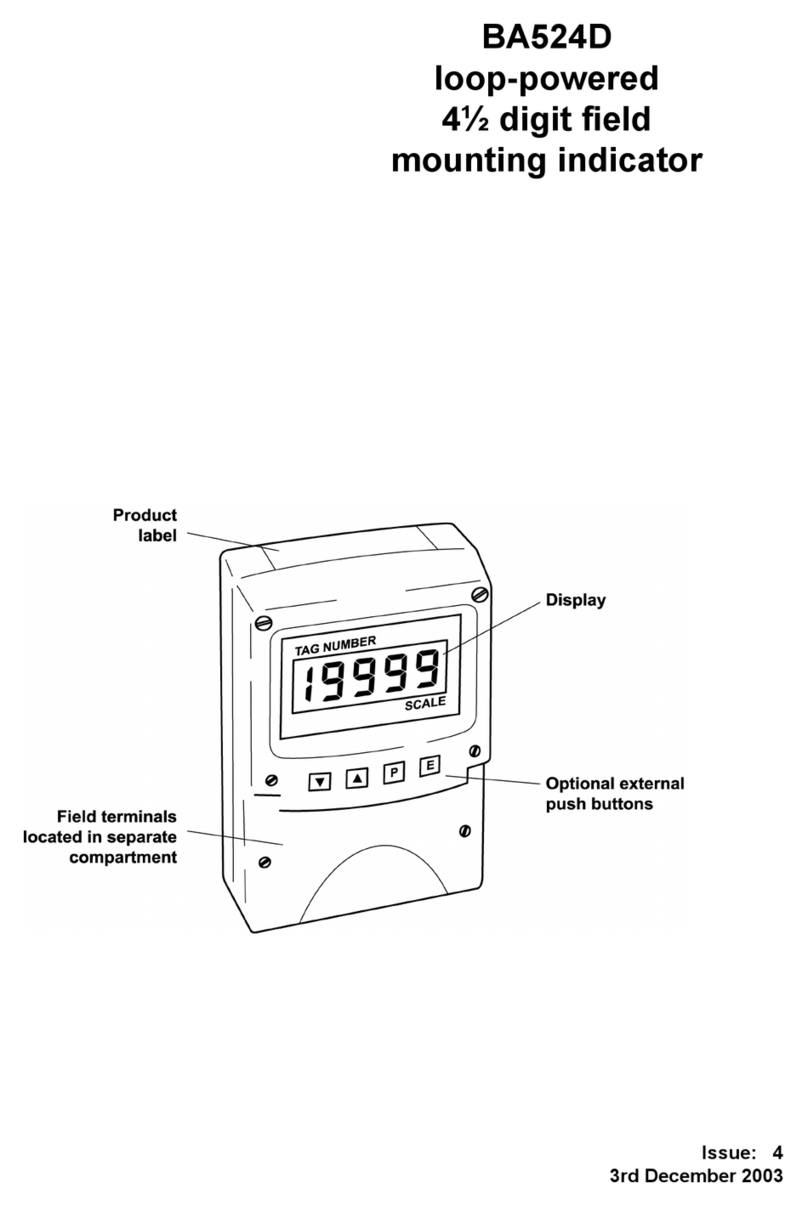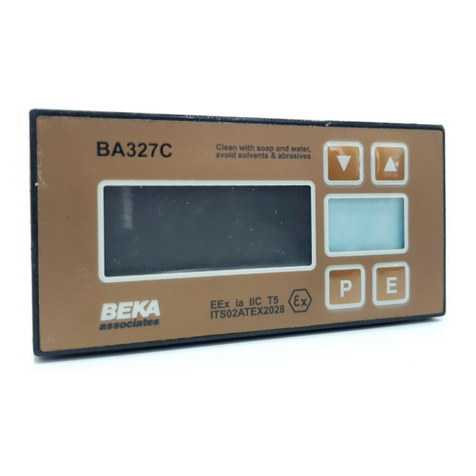3.4 Pulse input terminals
The BA314G Tachometer has a single pair of pulse
input terminals 5 and 6 that may be configured for use
with different types of sensor.
For sensors that require energising to determine their
state, such as switch contacts or a 2-wire proximity
detector, an external link between terminals 3 & 4 of
the BA314G connects an internal 7V, 6mA supply to
the input. Energising is not required when the
Tachometer's input is connected to a voltage pulse
source.
Fitting an external link between terminals 3 & 4
changes the output safety parameters of the
Tachometer input terminals 5 & 6 as shown in the
following table. This table also shows the types of
sensor requiring energising (link fitting).
Output safety parameters
Type of input Link 3 & 4 Uo Io Po
Switch contact Yes 10.5V 9.2mA 24mW
Proximity detector Yes 10.5V 9.2mA 24mW
Open collector Yes 10.5V 9.2mA 24mW
Magnetic pick-off No 1.1V 0.5mA 0.2mW
Voltage input (low) No 1.1V 0.5mA 0.2mW
Voltage input (high) No 1.1V 0.5mA 0.2mW
3.4.1 Sensor not requiring energising
Sensors employing magnetic pick-offs or voltage
pulse sensors do not require energising, therefore
terminals 3 & 4 should not be linked. When not
energised i.e. without a link, the output parameters of
the pulse input terminals comply with the
requirements for simple apparatus. For intrinsic
safety purposes, sources of energy with output
parameters less than 1.5V; 100mA and 25mW are
considered to be simple apparatus (Clause 5.7 of
EN60079-11), which allows their output parameters
Uo, Io & Po to be ignored when assessing the safety
of an intrinsically safe system, thus simplifying loop
assessment and documentation.
Almost any Sensor with a voltage pulse output may be
directly connected to the BA314G input in a
hazardous area providing that:
a. The Sensor is a certified intrinsically safe device
having output parameters equal to or less than:
Uo 28V dc
Io 200mA dc
Po 0.84W
or complies with requirements for
simple apparatus.
b. The Sensor and associated wiring can withstand
a 500V rms insulation test to earth.
c. The Sensor is located in the same hazardous
area as the BA314G. The BA314G EU-Type
Examination Certificate specifies that the
equivalent capacitance and inductance of the
pulse input is:
Ci = 2nF
Li = 4µH
To determine the maximum permissible cable
parameters these figures should be subtracted from
the maximum permitted output parameters Lo and
Co specified by the certificate for the Sensor
connected to the totaliser's pulse input terminals.
The totalisers pulse input equivalent capacitance
and inductance are small and unlikely to make a
significant difference to the allowable cable
parameters.
3.4.2 Sensors requiring energising
Sensors with switch contacts, proximity detector or
open collector outputs require energising which is
achieved by linking Tachometer terminals 3 and 4
together as described in section 3.4. When
energised, the output parameters of the pulse input
terminals 5 and 6 are:
Uo = 10.5V dc
Io = 9.2mA dc
Po = 24mW
These output parameters do not comply with the
requirements for simple apparatus and should be
considered when assessing the safety of the Sensor
connected to the totaliser pulse input.
Any certified intrinsically safe Sensor may be
connected to a BA314G energised input providing
that:
a. The Sensor is a certified intrinsically safe
device having input parameters equal to or
greater than:
Uo 10.5V dc
Io 9.2mA dc
Po 24mW
or complies with the requirements for
simple apparatus such as switch
contacts.
b. The Sensor and associated wiring can
withstand a 500V rms insulation test to earth.
c. The Sensor is located in the same hazardous
area as the BA314G.
d. Minimum operating voltage of a proximity
detector is less than 7.5V.
e. The maximum capacitance and inductance that
may be safely connected to the energised
pulse input terminals 5 & 6 (terminals 3 & 4
linked) is:
Co = 2.4µF
Lo = 200mH
This is not restrictive as the combined capacitance
and inductance of most sensors and the connecting
cable will be less than this.
8
